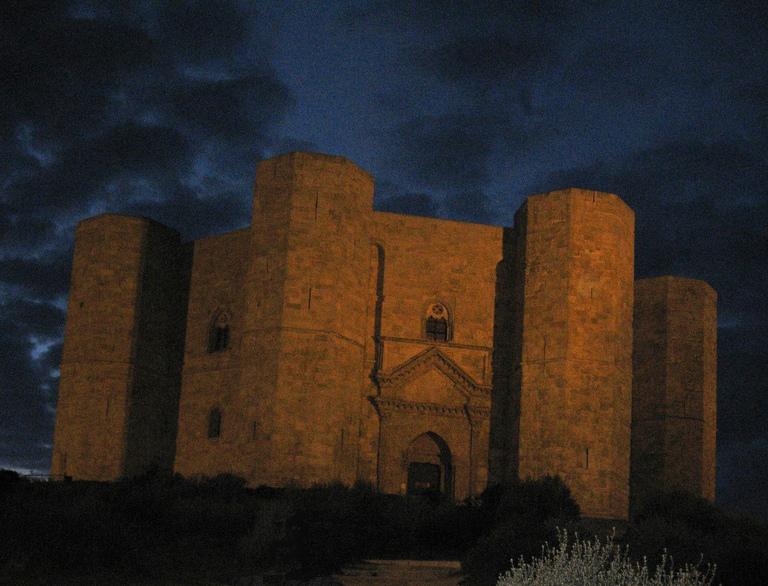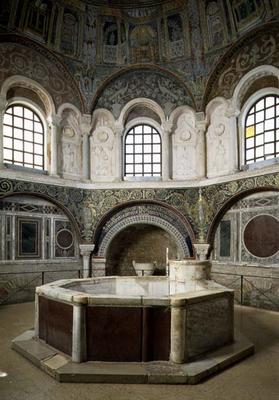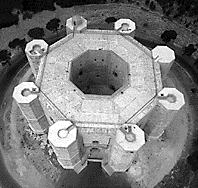Eight
The Castle
Translate from
 |
 |
|
"…and the foundation number of the universal authority. In Christian
symbology "8" represents the union of the Infinite (God) and the
Finite (man). In fact, in the IV Century, the Bishop of Milan, Ambrogio,
introduced the octagonal shape for baptistries in order to underline the
importance of being baptised. Whether, on conceiving this structure, Frederick
II intended to link the Infinite to the Finite (and symbolically the East to
the West) is only one possible interpretation that should (debatably) be taken
with a pinch of salt. Just out of curiosity: note that the sum of the numbers
of the year that Frederick died - 1250 - is eight."
- Visit to the Castle of Monte by Milan Uzelac |
 Ravenna, Italy 5th century |

 |
|
|
top |
|
Sign
the Dreambook
![]() Read
the Dreambook
Read
the Dreambook

|

|

|

|

|

|

|

|

|

|

|

|

|

|

|

|

|

|

|

|
| Works |
Lyrics
& Poems |
Gallery |
Guestbook
Archive |
Links | Discography |
E-mail:
Peter Sinfield Jon Green |
Page One |

 Arachnophilia
Arachnophilia